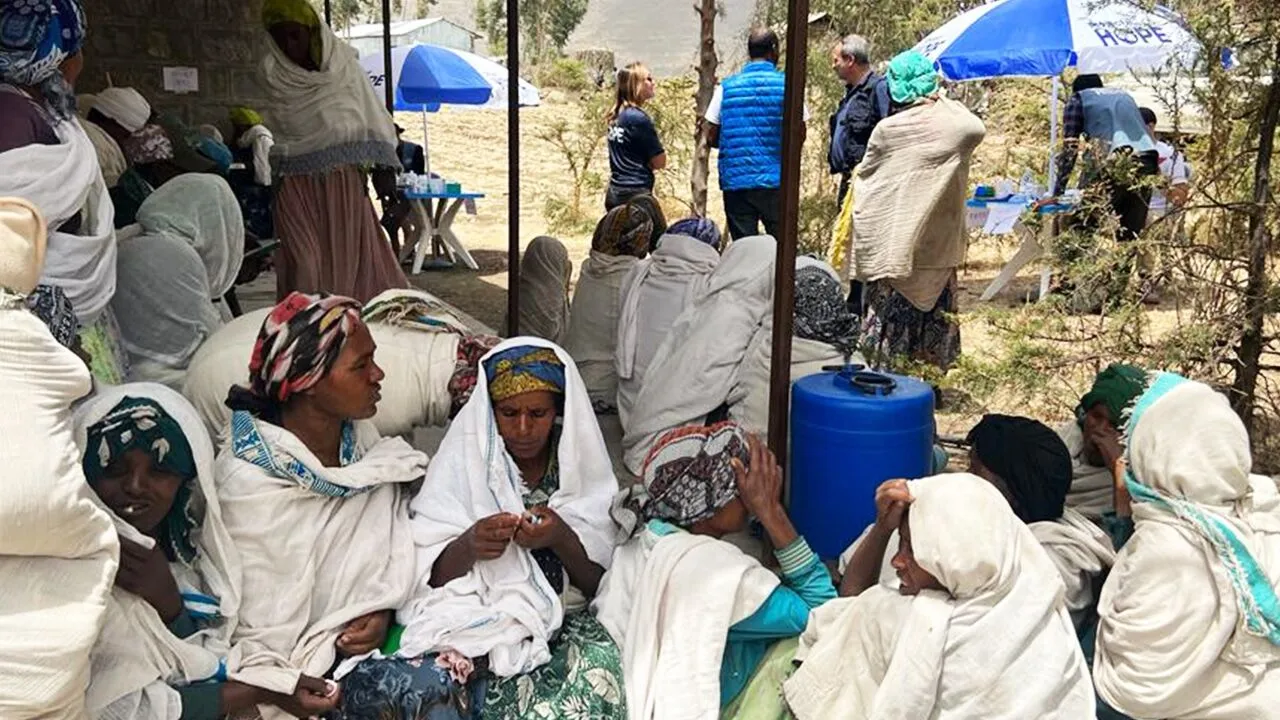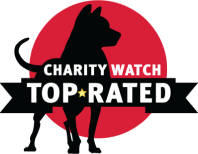In Ethiopia, Millions Go Hungry as Drought and Conflict Spread
In the Horn of Africa, severe drought, ongoing conflict, and widespread displacement are putting millions of lives on the line. Read more about how Project HOPE is providing emergency relief to those facing this devastating emergency.

In the Horn of Africa, multiple emergencies are compounding at once.
After four consecutive failed rainy seasons, the region is experiencing its worst drought in four decades, with a fifth failed rainy season likely to come.
Violence has displaced more than 4 million people in Ethiopia after two years of the Tigray war and multiple other localized conflicts.
Hospitals and health clinics have been damaged, destroyed, or looted, removing many people’s only access to health care.
And the ripple effects of Russia’s invasion of Ukraine are exacerbating the threat of widespread starvation.
“Ethiopia is facing multiple, complex challenges that have led to a critical crisis situation,” says Asayehegn Tekeste, a program director leading Project HOPE’s Ethiopia programs. “There have been more than 4 million people displaced nationwide. Natural disasters like locust invasions, drought, flooding, landslides, and other calamities have compounded the situation. The severity of the current drought is the worst in 40 years. Various communicable disease outbreaks are occurring. The nutritional status of the displaced and drought-affected populations is deteriorating, leading to a significant increase in malnourished children.

What is Happening in Ethiopia?
In Ethiopia, where Project HOPE has implemented HIV/AIDS and maternal health programming since 2017, more than 25 million people need humanitarian assistance and protection. That’s about 1 in 5 people in the country, or more than the entire population of Florida. More than half of them are children.
Conflict has made the emergency more severe. It’s estimated at least 9 million people are severely food insecure in the northern regions of Afar, Amhara, and Tigray, where ongoing conflict has destroyed health facilities and disrupted the delivery of lifesaving humanitarian assistance.
“With thousands of health facilities damaged and looted, critical lifesaving services like immunizations and care for sick and malnourished children have been significantly reduced,” Tekeste says. “Moreover, a lack of access to appropriate water, sanitation, and shelter facilities increased communicable diseases among the IDPs and has indirectly put women and girls at a higher risk of sexual and other types of violence.”
Extreme drought conditions have destroyed crops and killed more than 3 million livestock, leaving millions of people without a way to feed their families. More than 18 million people in Ethiopia, Kenya, and Somalia are now facing severe hunger and in need of urgent humanitarian assistance. And women and children are suffering most.
The situation has become even more dire as food and commodity prices rise as a result of the crisis in Ukraine. Until now, Ethiopia has depended on Ukraine for fertilizer and sunflower seed oil. The United Nations has warned that Somalia, which receives 90% of its grain from Russia and Ukraine, is on the brink of famine. The price of fuel has doubled and the cost of water has gone up 60%. More than 200,000 people could be facing famine in Somalia by September, while 1.5 million children under 5 may face acute malnutrition by the end of the year.

Ethiopia’s Widespread Displacement Crisis
Project HOPE President and CEO Rabih Torbay recently visited Ethiopia to see the crisis first-hand. Less than two hours from the capital, Addis Ababa, thousands of people have gathered in displacement camps with inadequate health or sanitation facilities.
“The conditions are horrible,” Torbay says. “Sanitation is a huge issue. They have no latrines, and water was a big problem. Water tanks were damaged. The drought is as bad as you could imagine. We’re going to be seeing failing crops for many seasons. We don’t see an end in sight.”
Together, conflict and drought have triggered widespread displacement: 3.6 million Ethiopians are currently displaced by conflict and 420,900 by drought. Many of these internally displaced persons (IDPs) are unable to return to their homes. They seek refuge in host communities or in IDP camps, most of which are set up spontaneously.
Health is quickly deteriorating as a result. Common health issues encountered by the IDP population include diarrheal diseases, respiratory illnesses, acute febrile illnesses, scabies, malnutrition, and vaccine-preventable diseases such as measles. The diagnosis and management of mental health and noncommunicable disease among IDPs is also a significant burden—one that, for the most part, remains unaddressed.
“Displacement and drought have had a severe impact on health and social services, and various communicable disease outbreaks are occurring,” Tekeste says. “Partners and the government are working hard to control measles, cholera, and diarrheal disease outbreaks in the country, while the health system is trying to cope with the third wave of COVID-19. The nutritional status of IDPs and drought-affected populations is deteriorating with lack of food and water and accessible health services, leading to a significant increase in the number of malnourished children and pregnant and lactating women.”
Project HOPE’s Response in Ethiopia

As a result of this crisis, Project HOPE is increasing our number of mobile health and nutrition teams to provide health services to IDPs and communities that need health care in Ethiopia. Our teams are providing essential medicines, vaccines, medical supplies, and ready-to-use therapeutic foods (RUTF) to conflict-affected populations, with a focus on supporting women, children, and people living with or affected by HIV.
Project HOPE already implements a range of relief programs in the country, particularly in Northern Ethiopia, which focus on improving reproductive, maternal, newborn, and child health and combating the spread of HIV/AIDS and COVID-19.
The impacts of the crisis have had ripple effects on other areas of health. One local nurse shared with our team that some HIV patients have been forced to stop their antiretroviral therapies because they couldn’t afford or find food to take with their medicine. At one hospital where we work, the travel stipend given to patients so they can travel to the hospital to receive care is no longer enough.
As women and children suffer needlessly, Project HOPE is expanding its relief work in the country and urging the international community to step up its humanitarian assistance.
“In drought-affected woredas [districts] of the country, we anticipate the situation to worsen,” Tekeste says. “A lack of adequate food and water coupled with a lack of nutritional commodities is putting the lives of millions of children and women in danger.”
“I have been involved with humanitarian aid efforts for decades, and yet the situation in Ethiopia surprised me. It is far worse than I expected,” Torbay says. “We must sound the alarm about the conditions there and address them now.
“It is not enough to keep people alive just to die another day. A more robust international response is needed to lift them out of extreme poverty and hunger, prevent more disease outbreaks, and avert a massive loss of life.”







